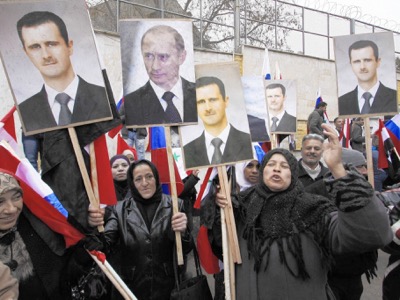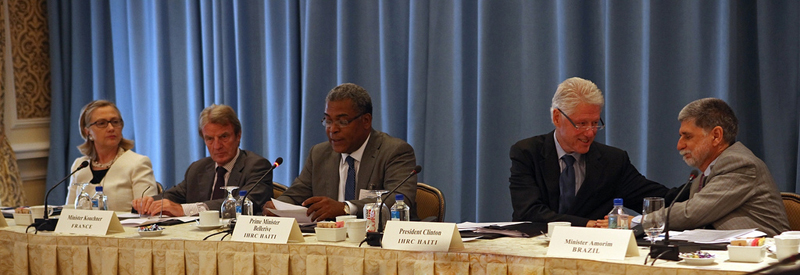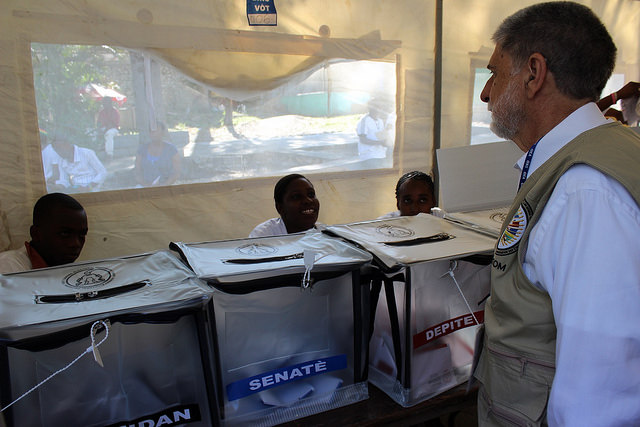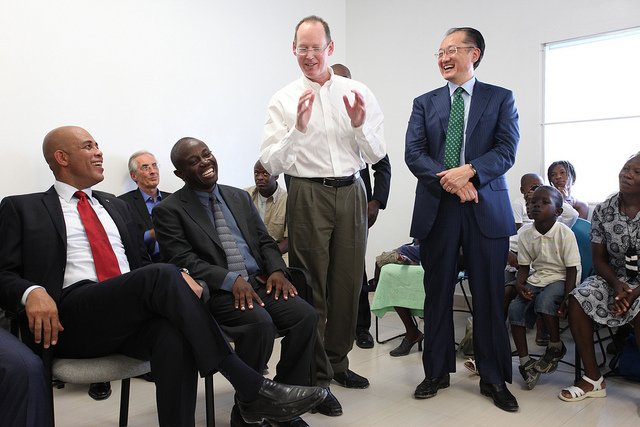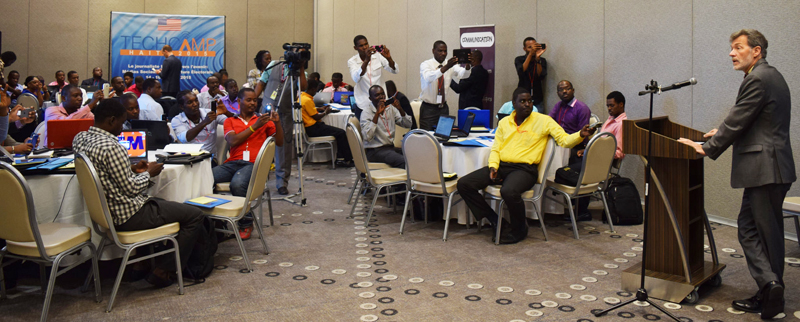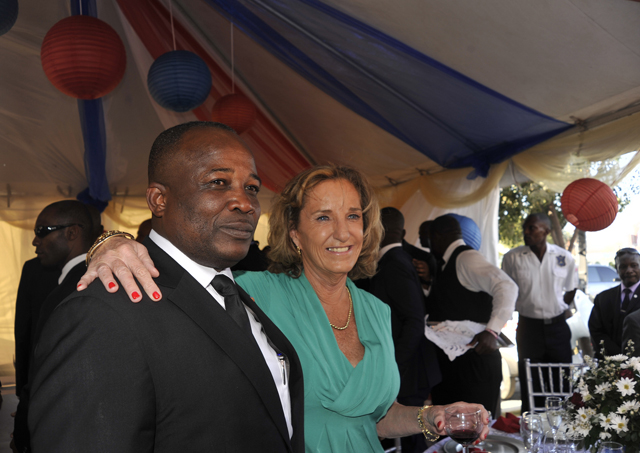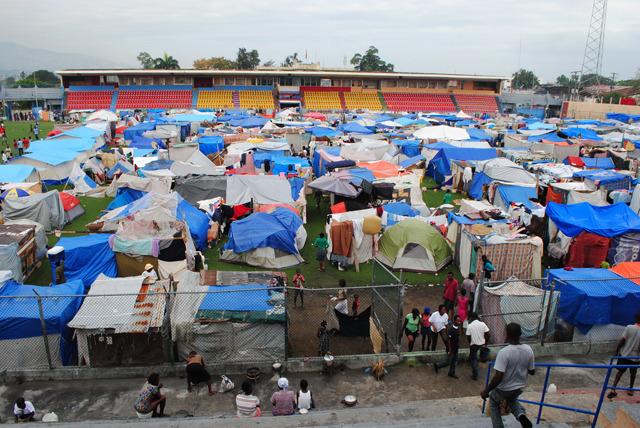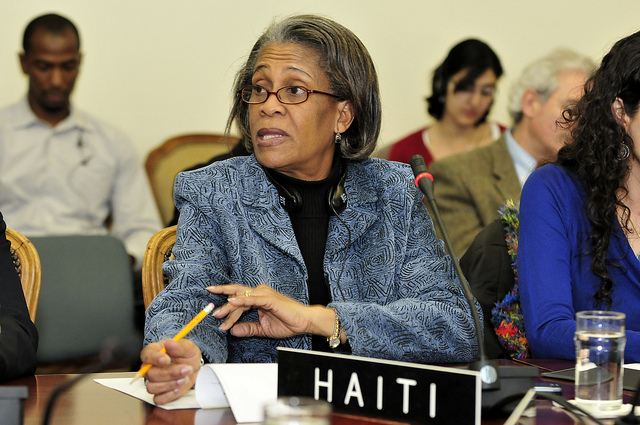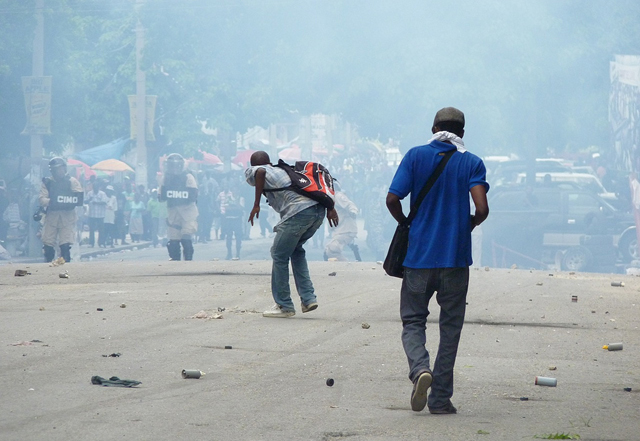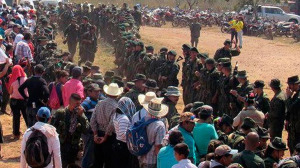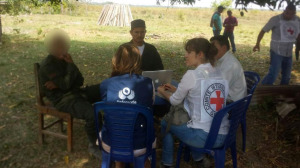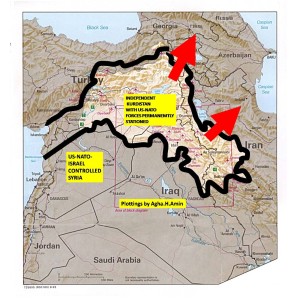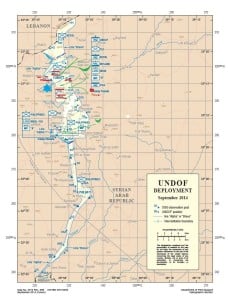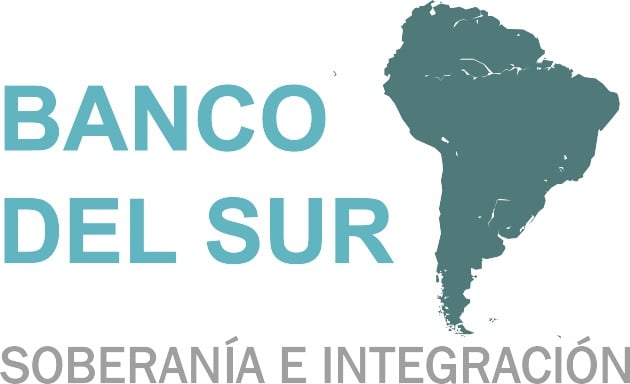Originally published in January 2013:
Many tourists from the US and around the world visit Hawaii for its beautiful islands and its beaches covered with white sand. It is known for its food and traditional luau celebrations, its native people and its culture. When you vacation in Hawaii it offers surfing, snorkeling, scuba diving, fishing, hiking and many other activities. It has been the 50th State of the United States since August 21st, 1959. Since statehood, tourism has been the main industry followed by Education, Government and the Military. However, Hawaii was a country whose government of Queen Lili’uokalani was overthrown more than 120 years ago on January 17th, 1893, when Hawaii was actually known as the Kingdom of Hawaii. It is a part of history that needs to be told.
Hawaii has experienced a transformation of its culture and politics into a Western-style democracy that has seen a steady decline in the indigenous Hawaiian population. In a US Census Bureau of 2011 reported that native Hawaiians and Pacific Islanders accounted for only 10.1% of the total population.
Hawaii has also experienced a militarization of its country since President William McKinley; a veteran of the American Civil War expanded the US military on Hawaii with several bases. Military expansion continued under President Theodore Roosevelt. After the attack on Pearl Harbor on December 7th, 1941 the US military expanded its power and declared Martial Law until October 24th, 1944. Since then Hawaii has been turned into a major strategic location for the US military. Since January 1st, 1947, the U.S. Pacific Command (USPACOM) was established after World War II with its headquarters based in Aiea, a small Hawaiian town on the island of Oahu, near the community of Halawa Heights. The story of Hawaii is tragic and the world needs to know exactly what happened to the sovereignty of this nation. It is not just an island where you can have an adventurous vacations, because the truth is that Hawaii was systematically stolen from its native population by an imperial power, one that it was setting its horizons towards the rest of the world, but this time through the Pacific Ocean.
Before the American Occupation
The Kingdom of Hawaii had been an independent Chiefdom since 1810 with smaller independent chiefdoms of O’ahu, Maui, Moloka’i, Lana’i, Kaua’i and Ni’ihau that were unified by the chiefdom of Hawaii under King Kamehameha I or “Kamehameha the Great”. Hawaii had its own culture and political systems for at least 2,000 years before the unification of Hawaii in 1810. There were two families who ruled the Kingdom of Hawaii, the House of Kamahameha who ruled from 1810-1872 and the Kalakaua Dynasty from 1873-1893.

King Kamehameha I
Kamehameha I ruled from 1810 until 1819, the year he died. His son King Kamehameha II was his successor and ruled Hawaii from May 8, 1819 until July 1824 the day he died of measles in London.Then King Kamehameha III, the second son of Kamehameha I, was the successor to the throne. The Hawaiian Kingdom was governed independently until 1838. It was based upon a system of common law, which included the ancient kapu (taboo) and the traditions of the Chiefs. King Kamehameha III initiated and influenced the Declaration of Rights and signed it on June 7, 1839. It was the first step into a modern democracy, one that did not follow the ancient ways of life that the people of Hawaii were accustomed to. It offered protections to all classes of people, Government, Chiefs and Native tenants.

King Kamehameha II (right)
The Declaration of Rights opening statement read as follows:“God hath made of one blood all nations of men to dwell on the earth,” in unity and blessedness. God has also bestowed certain rights alike on all men and all chiefs, and all people of all lands. These are some of the rights which He has given alike to every man and every chief of correct deportment; life, limb, liberty, freedom from oppression; the earnings of his hands and the productions of his mind, not however to those who act in violation of the laws”. On October 8, 1840, King Kamehameha III voluntarily relinquished his powers and created a constitution that recognized three divisions of a civilized monarchy that included the King as the Chief Executive, the Legislature, and the Judiciary. The King represented the Government class, the House of Nobles represented the Chiefly class and the House of Representatives represented the Tenant class (Native Hawaiians). The Hawaiian Government’s function was to protect the rights that were already established by the 1839 Declaration of Rights. King Kamehameha III introduced Hawaii’s first constitution as a constitutional monarchal system modeled after the Declaration of Independence of the United States. The Constitution defined the duties of each branch of government through laws stated that protected the rights and maintained the duties with respect for better relations between all three classes of people.

King Kamehameha III
The new constitution encouraged the development of the country with industry and commerce. The Constitution granted land tenure which protected the rights of landowners as to promote the cultivation of soil modeled after feudalism in Medieval Europe where tenants were allowed to occupy lands in exchange for their service or labor. However, such arrangements under the revised constitution did not require a vassal-style service by both the Chiefly and Tenant classes to the King as in medieval times.By 1843, King Kamehameha III sent delegations to the United States and Europe to settle differences and negotiate treaties for recognition of Hawaii’s Independence. That same year, the success of the delegations meetings with the US and Europe acknowledged Hawaii’s call for their recognition as an independent nation. Many nations recognized Hawaii’s claim of sovereignty by 1843 and signed on to numerous Treaties and Conventions over the years including Denmark (1846), Great Britain (1851), Sweden and Norway (1852), France (1857), Belgium (1862), Netherlands (1862), Italy and Spain (1863), Russia (1869), Japan (1871), Austria-Hungary (1875), Hamburg and Bremen (now Germany in 1879), Portugal (1882) and many others. Ironically, the United States which recognized Hawaii’s claim to sovereignty and signed numerous treaties and conventions in 1849, 1870, 1875, 1883 and 1884.On December 15, 1854 King Kamehameha III had died, his successor, King Kamehameha IV born Alexander ʻIolani Liholiho Keawenui was assumed office of the Constitutional Monarch. He died of chronic asthma on November 30, 1863. Lot Kapuaiwa, a former Premier became King Kamehameha V under constitutional law of 1852. He was the architect behind the 1864 Constitution or the ‘Kamehameha Constitution’ that did not relinquish more power to the Monarch, because the power of the Monarch it once had, was now limited.

King Kamehameha IV (right)
It was also law that the Monarch had to take an oath of office to serve the people. The new constitution also removed the office of the Kuhina Nui (Premier) because it interfered with the duties of the Minister of Interior. On December 11, 1872, King Kamehameha V died. He did not name a successor to the throne. On January 8, 1873, William Charles Lunalilo of the Kalakaua Dynasty was elected successor to King Kamehameha V. One year later on February 3rd, 1874, King Lunalilo died without naming a successor. The Hawaiian Legislature then elected David Kalakaua on February 12th, 1874 in a special session. His first act was to nominate and confirm his younger brother, William P. Leleiohoku, as successor, but on April 10, 1877, William P. Leleiohoku had died. King David Kalakaua publicly announced Lydia Kamaka’eha Dominis to be his successor who was later called Queen Lili’uokalani. By 1887, turmoil erupted when the Bayonet Constitution was imposed on Hawaii by a small group of American, European and Hawaiian nationals called the “Honolulu Rifles” which had more than 1,500 armed men. They had a meeting and planned to take away the political rights from the native population. They threatened King David Kalakaua with death if he did not accept their demands. One of the demands was for a new Cabinet Council, so on July 7, 1887 the new “Bayonet Constitution” was forced upon the King by the newly imposed members of his cabinet.

King Kamehameha V
However, the Legislative Assembly had been adjourned since October 16, 1886 making the new constitution illegal because it did not obtain the consent or the necessary ratification of the Legislative Assembly. The new constitution forced voters including foreign nationals (who were considered aliens and first time voters) to swear an oath to support the constitution before they could vote in any election. The “Honolulu Rifles” used the vote to disenfranchise the majority vote of the native Hawaiian population so that “White” foreign nationals can gain control of the Legislature and it also provided a loophole that benefited the self-imposed Cabinet Council to control the Monarchy. Hui Kalai’aina or the Hawaiian Political Party was an organization that protested against the constitution of 1887. Hui Kalai’aina consistently petitioned King David Kalakaua to bring back the legitimate 1864 constitution.
The Overthrow of Queen Lili’uokalani

Queen Lili’uokalani
The Annexation of Hawaii was a result of a planned Coup d’état by a group of Christian Missionaries who came from Boston, Massachusetts called the Committee of Safety, a 13-member group of the Hawaiian League or ironically known as the Annexation Club composed of American, Hawaiian, and European citizens who were also members of the Missionary Party. The Coup also involved American and European residents who supported the Reform Party of the Hawaiian Kingdom.On January 16, Charles B. Wilson a Marshal of the Kingdom was told that a planned coup was taking place by Hawaiian detectives. Wilson requested warrants to arrest members of the Committee of Safety and called for martial law. But the members were politically connected to United States Government Minister John L. Stevens so the requests were denied by Attorney General Arthur P. Peterson and members of the Queen’s cabinet to avoid any violence if they issued the arrest warrants.The planned Coup was led by Lorrin A. Thurston, a grandson of American missionaries and future President of the Provisional Government of Hawaii, Sanford B. Dole. He was supported by American and European business interests that were living in Hawaii. Thurston was also supported by the Reform Party of the Hawaiian Kingdom who registered voters and delivered voter turnouts for political candidates in their favor. After Wilson tried to negotiate with Thurston which failed, he began a mobilization of armed men for a confrontation with the Committee of Safety with Captain Samuel Nowlein of the Royal Household Guard and accumulated a force of about 496 men to protect the Queen.

Lorrin A. Thurston
The Coup began on January 17, 1893 when a local police officer was shot and wounded trying to stop a wagon carrying weapons to the Honolulu Rifles. The Committee of Safety organized the Honolulu Rifles to position themselves at Ali’olani Hale, right across the street from Iolani Palace (the Queen’s residence) and waited for her response to the Coup.The overthrow of Queen Lili’uokalani took place on January 17, 1893. The Committee of Safetyremoved the queen, overthrew the entire monarchy, and led the charge for Hawaii’s annexation to the United States. What prompted the actions undertaken to overthrow the Queen? Three days prior to the Coup, which was on January 14, 1893, Queen Lili’uokalani drafted a new constitution that carried the principles and the laws of the Constitution of 1864. During the Coup, the Committee of Safety was concerned that American citizens could have possibly been in danger of retaliation from the Native population, so the United States government Minister John L. Stevens called for US Marines and sailors from the USS Boston to protect the Consulate, Arion Hall and the US Legation. The Queen was deposed and the Kingdom of Hawaii was under the control of the US military.
 Sanford B. Dole
Sanford B. Dole
U. S. Marines and sailors who were ordered to land in Hawaii at the conspirators request contributed to the success of the coup. Queen Lili’uokalani was placed under house arrest at the Iolani Palace. It led to the formation of the Republic of Hawaii for a short time. In order to avoid bloodshed Queen Lili’uokalani temporarily relinquished her throne and issued the following statement to the United States Government:
I, Liliuokalani, by the grace of God and under the constitution of the Hawaiian Kingdom, Queen, do hereby solemnly protest against any and all acts done against myself and the constitutional Government of the Hawaiian Kingdom by certain persons claiming to have established a Provisional Government of and for this Kingdom. That I yield to the superior force of the United States of America, whose minister plenipotentiary, His Excellency John L. Stevens, has caused United States troops to be landed at Honolulu and declared that he would support the said Provisional Government.Now, to avoid any collision of armed forces, and perhaps the loss of life, I do, under this protest and impelled by said forces, yield my authority until such time as the Government of the United States shall, upon the facts being presented to it, undo (?) the action of its representative and reinstate me in the authority which I claim as the constitutional sovereign of the Hawaiian Islands.
Done at Honolulu, this 17th day of January, A. D. 1893.
A provisional government was established and assumed power until the annexation of Hawaii took place with the United States. On February 1, 1893, the US Minister (ambassador) John L. Stevens proclaimed Hawaii a protectorate of the United States. A treaty of annexation was submitted to the United States Senate, on February 15, 1893 but the newly elected U.S. President Grover Cleveland, withdrew the treaty of annexation and appointed former Democratic congressman from Georgia, James H. Blount, as Special Commissioner to investigate the illegal intervention by U.S. diplomatic and military personnel on behest of the business elites. Although Blount did not interview any of the conspirators for the report, he concluded that the United States legation and the US Marines and Navy were responsible for the overthrow of Queen Lili’uokalani’s government as an illegal act that violated international laws.
On November 16, 1893, President Cleveland proposed to return Queen Lili’uokalani to the throne if she granted amnesty to those responsible for the Coup. She refused the offer. It was then reported that Queen Lili’uokalani would have the conspirators “beheaded”, but she denied the accusation. She did admit however that she intended the Coup plotters to suffer the punishment of banishment. In her book, Hawaii’s Story by Hawaii’s Queen by Liliuokalani, Queen of Hawaii (1838-1917) clearly stated her position on beheading her opponents and how the media misinformed the public on what she actually said:
I well knew, and it has been conclusively shown in this history, that my actions could not be binding or in any way recognized unless supported by the ministers in cabinet meeting. This was according to law, and according to the constitution these very persons had forced upon the nation. Perhaps Mr. Willis thought that all he had to do was to propose, and then that my place was to acquiesce. But he asked again for my judgment in the matter as it stood, and seemed determined to obtain an expression of opinion from me. I told him that, as to granting amnesty, it was beyond my powers as a constitutional sovereign. That it was a matter for the privy council and for the cabinet. That our laws read that those who are guilty of treason should suffer the penalty of death.
He then wished to know if I would carry out that law. I said that I would be more inclined personally to punish them by banishment, and confiscation of their property to the government. He inquired again if such was my decision. I regarded the interview as an informal conversation between two persons as to the best thing for the future of my country, but I repeated to him my wish to consult my ministers before deciding on any definite action. This terminated the consultation, excepting that Mr. Willis specially requested me not to mention anything concerning the matter to any person whomsoever, and assured me he would write home to the government he represented.
He did so. It was a long month before he could receive any reply; but when it came he communicated the fact to me, and asked for another interview at his house. This time he also inquired if there was any other person I would like to have with me. I suggested the name of Mr. J. O. Carter, at which the American minister seemed to be highly pleased. So at the stated hour we met. This time Mr. Willis had present as his stenographer Mr. Ellis C. Mills, afterward American consul-general at Honolulu. He first read me what he said were some notes of our former interview. From whence did these come? By Mr. Willis’s own proposition we were to be entirely alone during that interview, and to all appearance we were so. Was there a stenographer behind that Japanese screen? Whatever the paper was, Mr. Willis finished the reading of it, and asked me if it was correct. I replied, “Yes.”
Doubtless, had I held the document in my hand, and had I been permitted to read and examine it, for the eye perceives words that fall unheeded on the ear, I should then have noticed that there was a clause which declared that I was to have my opponents beheaded. That is a form of punishment which has never been used in the Hawaiian Islands, either before or since the coming of foreigners. Mr. Willis then asked me if my views were the same as when we met the first time; and I again said “Yes,” or words to that effect. Mr. Carter inquired if I rescinded so much of Mr. Willis’s report as related to the execution of the death penalty upon those in revolt. To this I replied, “I do in that respect.”
Yet, notwithstanding the fact was officially reported in the despatches of Mr. Willis, that I especially declared that my enemies should not suffer the death penalty, I found to my horror, when the newspapers came to Honolulu from the United States, that the President and the American people had been told that I was about to behead them all! There is an old proverb which says that “a lie can travel around the world while the truth is putting on its boots.” That offensive charge was repeated to my hurt as often as possible; although I immediately send my protest that I had not used the words attributed to me by Mr. Willis in our informal conversation, and that at my first official interview with him I had modified (so far as my influence would go) the law of all countries regarding treason.
The American government and media were demonizing the Queen by misreporting what she was saying about the death penalty. It made the Hawaiian Kingdom look like a barbaric society when it came to law and order. President Cleveland sent the issue of reinstating Queen Lili’uokalani to the United States Congress with a referral for a US Senate investigation. But later the Queen changed her position on the issue of punishment. So on December 18, 1893, US Minister Willis demanded that the Queen should be returned to the throne by the Provisional Government without knowing that President Cleveland had already sent a referral to Congress. So the Provisional government flatly refused the demands of US Minister Willis knowing that the issue was out of the President’s hands. The US Congress commissioned John Tyler Morgan, a known racist and a supporter of Hawaiian Annexation to investigate the Hawaiian revolution.

John Tyler Morgan
The Morgan Report was produced on February 26, 1894 found all parties involved in the coup “NOT GUILTY”. Shortly after the Morgan Report was released, President Cleveland changed his position and ignored the Queen’s demands upon the US government to intervene on Hawaii’s political situation concerning her reinstatement of her throne. President Cleveland resumed normal diplomatic relations with the Provisional Government of the Republic of Hawaii. On July 4, 1894, Sanford B. Dole became the President of the Republic of Hawaii and was recognized by the United States government as a protectorate. The Republic continued to govern Hawaii but was unpopular among the country’s residents who were against annexation, so voting rights became limited to only 4,000 people who were eligible to the Republic’s standards; most of them were politicians that were already in power.
The US government did not reinstate the constitutional government of the Hawaiian Kingdom after it was clear that the Provisional government was fully responsible for the political dilemma.Then a resistance took place between January 6th and January 9th, 1895 on the island of Oahu, Hawaii by Royalists who opposed the overthrow of the Kingdom of Hawaii, known as a Counter-revolution. The Counter-revolution was led by Robert Wilcox, Joseph Nawahi, a former Minister of Foreign Affairs and Charles T. Gulick, an advisor to both Kalākaua and Queen Liliʻuokalani and other members of the former Royal Guard who were disbanded in 1893.
They recruited native Hawaiians who were willing to fight, but were inexperienced and their numbers were small in comparison to the Provisional government’s forces who were well armed and funded through Hawaii’s treasury. The plan was to restore Queen Liliuokalani to the throne. The rebels had smuggled arms from California and sent to a secret Honolulu location. Three separate battles took place on Oahu, but the rebels lost the fight. After the battles, arms were found at Washington Place; Queen Lili’uokalani was convicted of treason and was under house arrest at ‘Iolani Palace. She formally abdicated on January 24, 1895, and eventually won clemency for the rebels.The US government’s non-action on Hawaii’s political status continued after the rebellion. The US government waited for five years until President Cleveland left office on March 1897.
Then a new President of the United States was elected and it was non-other than Republican William McKinley who defeated Democrat William Jennings Bryan. One of President McKinley’s campaign planks was that “The Hawaiian Islands should be controlled by the United States and no foreign power should be permitted to interfere with them.” President McKinley entered a second treaty of annexation with the same group of men of the U.S. legation that was involved in the overthrow of the Constitutional Monarchy on June 16, 1897. However, due to the protests submitted by Queen Lili‘uokalani and more than 21,169 signature petitions by Hawaiian Nationals against annexation, the treaty could not be ratified by the US Senate.
On December 1897, the U.S. Battleship Maine was sent to Havana Harbor to “protect U.S. citizens and property” during the Cuban War of Independence, the road to war with Spain was in the making.On February 15th 1898, The USS Maine exploded and sunk killing more than 260 sailors. The US Naval Court of Inquiry created the Sampson Board to investigate the incident and declared that the incident occurred by a submerged explosive mine, but no blame was put on a particular country at the time. “Yellow” journalism of William Randolph Hearst blamed the attack on Spain (In 1969, the U.S. Navy determined that the USS Maine exploded due to a defective boiler). However, the American public and congress along with the Republican Party wanted war with Spain, thanks to the propaganda by the media who published headlines such as “Remember the Maine, to Hell with Spain” brought war fever to the people and won popular support.
President McKinley continued negotiations with Spain for Cuba’s Independence with a three-point plan that called for a cease-fire for at least six-months, allow civilians the freedom to return to their homes and communities and allow US Ambassador Steward Woodford to have Spain agree if peace is not achieved by October 1st President McKinley would then find a solution to the crisis, but it was unsuccesful. McKinley sent the matter to Congress. Congress declared war and McKinley sent a list of demands through US Ambassador Steward Woodford for the immediate cease-fire with the Cuban rebels and the withdrawal of Spain from Cuba since the Cuban War of Independence was ongoing.
Spain agreed to U.S. demands on April 10, but before McKinley received Spain’s response he had reversed his position on war with Spain and called for “forcible intervention” to bring peace to Cuba. On April 20, 1898, Congress passed a joint resolution which McKinley signed and called for the recognition of Cuba’s Independence; the withdrawal of Spain from Cuba authorizes the President to use the military to meet its demands and denied any intention of occupying Cuba after Spain withdrew its forces which the Teller Amendment attached to the Joint resolution had implied. The resolution was received by Spain with an ultimatum that the US would use military force if Cuba’s independence was not recognized.
On April 21st Spain broke diplomatic relations with the US and on the following day the US implemented a naval blockade of all Cuban ports. On April 24th Spain declared war on the US. The next day, the US formally declares war on Spain by Act of Congress although the US had declared war by its blockade of the Cuban ports.On May 4th, 1898 Representative Frances G. Newlands of Nevada introduces Joint Resolution of Annexation known as the Newlands Resolution in House of Representatives regarding Hawaii’s political situation. Part of the resolution said:
Whereas the Government of the Republic of Hawaii having, in due form, signified its consent, in the manner provided by its constitution, to cede absolutely and without reserve to the United States of America all rights of sovereignty of whatsoever kind in and over the Hawaiian Islands and their dependencies, and also to cede and transfer to the United States the absolute fee and ownership of all public, Government, or Crown lands, public buildings or edifices, ports, harbors, military equipment, and all other public property of every kind and description belonging to the Government of the Hawaiian Islands, together with every right and appurtenance thereunto appertaining;
Therefore Resolved by the Senate and House of Representatives of the United States of America in Congress Assembled, That said cession is accepted, ratified, and confirmed, and that the said Hawaiian Islands and their dependencies be, and they are hereby, annexed as a part of the territory of the United States and are subject to the sovereign dominion thereof, and that all and singular the property and rights hereinbefore mentioned are vested in the United States of America.
In a Secret Debate on the Annexation of Hawaii on May 31st, 1898, Republican Senator Henry Cabot Lodge saw the Annexation of Hawaii as a Military strategic location concerning the Spanish-American War:
“Mr. President, if I had been permitted to continue I could have finished in ten minutes. I have really made the argument which I desire to make. If it had not been that it would have precipitated a protracted debate, I should have argued then what has been argued ably since we came into secret legislative session, that at this moment the Administration was compelled to violate the neutrality of those islands, that protests from foreign representatives had already been received, and complications with other powers were threatened, that the annexation or some action in regard to those islands had become a military necessity”
On June 15th, The House of Representatives passed the resolution. Then on July 6th in a 42-21 vote with the absence of 26 Senators passed the resolution. Present McKinley signed the Newlands Resolution the next day on July 7th. By August 12th, 1898, Hawaii is a US territory.
A ceremony took place that removed the Hawaiian flag and replaced it with an American flag. It also established Hawaii as a US military base to fight Spain in the Pacific Ocean notably, Guam and the Philippines. It was a plan by the US government to annex Hawaii as a military strategic location recommended by Alfred T. Mahan.Mahan was considered an important strategist on the issue of “Sea Power”. His strategies influenced Navies from Great Britain, Germany, Japan and the United States. He wrote a letter to the New York Times which was published back on January 31st, 1893 caught the attention from the editor of ‘The Forum’ and asked him to state his case to the military on the importance of Hawaii called “Hawaii and Our Future Sea-power.” It was published in the March-August 1893 issue. In the letter Mahan wrote:
To the Editor of the “New York Times”:–
There is one aspect of the recent revolution in Hawaii which seems to have been kept out of sight, and that is the relation of the islands, not merely to our own and to European countries, but to China. How vitally important that may become in the future is evident from the great number of Chinese, relatively to the whole population, now settled in the islands.
It is a question for the whole civilized world and not for the United States only, whether the Sandwich Islands, with their geographical and military importance, unrivalled by that of any other position in the North Pacific, shall in the future be an outpost of European civilization, or of the comparative barbarism of China. It is sufficiently known, but not, perhaps, generally noted in our country, that many military men abroad, familiar with Eastern conditions and character, look with apprehension toward the day when the vast mass of China—now inert—may yield to one of those impulses which have in past ages buried civilization under a wave of barbaric invasion. The great armies of Europe, whose existence is so frequently deplored, may be providentially intended as a barrier to that great movement, if it come. Certainly, while China remains as she is, nothing more disastrous for the future of the world can be imagined than that general disarmament of Europe which is the Utopian dream of some philanthropists.
China, however, may burst her barriers eastward as well as westward, toward the Pacific as well as toward the European Continent. In such a movement it would be impossible to exaggerate the momentous issues dependent upon a firm hold of the Sandwich Islands by a great, civilized, maritime power. By its nearness to the scene, and by the determined animosity to the Chinese movement which close contact seems to inspire, our own country, with its Pacific coast, is naturally indicated as the proper guardian for this most important position. To hold it, however, whether in the supposed case or in war with a European state, implies a great extension of our naval power. Are we ready to undertake this?
A.T. MAHAN, Captain, United States Navy
Hawaii was annexed because it was a strategic location for imperial reasons. One of them was to have a military presence on the Pacific ocean in close proximity to East Asia which includes China, Japan, North and South Korea, Mongolia and Taiwan. The other reason was to have access to Asian markets for American Corporate interests.
The Territory of Hawaii and the “Big Five” Corporate Monopoly
Under President McKinley, Americans fought against Spain in 1898 in the Caribbean (Cuba and Puerto Rico), and in the Pacific (The Philippines, and Guam). Hawaii’s strategic location for warfare in the Philippines was vital to American interests. President McKinley also signed the Hawaiian Organic Act of 1900. It established the Office of the Territorial Governor, a control mechanism that allowed the Governor of Hawaii to be dictated by the President of the United States. The Territorial Governor can be removed at any time without the consensus of the Hawaiian people. Since then Hawaii’s tourism industry expanded. The US Military also expanded under American Presidents William McKinley and Theodore Roosevelt with several bases on the island of Oahu. By 1906, the island of Oahu was fortified as a “Ring of Steel,” with gun batteries pointed outwards towards the Pacific Ocean mounted on steel coastal walls. Today there is even a Hawaii Army Museum.
From July 7, 1898 until August 21st, 1959 the “Big Five” were multi-million dollar corporations that operated during the Kingdom era until Hawaii became the 50th state. The “Big Five” benefited from the annexation and became dominate power in the Hawaiian economy. The “Big Five” were Castle & Cooke, Alexander & Baldwin, C. Brewer & Co., American Factors (who was later renamed to Amfac) and Theo H. Davies & Co. Sugarcane plantations gained investments by eliminating tariffs imposed on the sugarcane that was sent to the United States which benefitted them with extra money to spend on new equipment, acquire more land and hire more cheap labor. The companies did not compete with each other because they joined forces by working together to keep the prices on their goods and services relatively high. This allowed them to gain enormous profits. The executives of the “Big Five” collaberated on all issues even as board of directors for all of their companies. They gained political power since their corporations dominated all of Hawaii. They controlled the labor force and even steered the labor force to vote in their favor. Hawaii was effectively ruled by the “Big Five” as an oligarchy. They backed only white candidates who were Republicans to run the government. Democrats were not popular among the Oligarchs.
A signature produce from Hawaii that is known and sold in many countries around the world today was Pineapples. The Pineapples industry was started by Sanford B. Dole’ s cousin, James Drummond Dole known as the Hawaiian Pineapple Company, today it called the Dole Food Company. James Dole arrived around 1899 and started the first Pineapple Plantation. Around that same time on August 8, 1899, Hurricane San Ciriaco struck Puerto Rico followed by another hurricane which severely damaged the agricultural industry that left more than 3,000 dead and left thousands of people without food or shelter. The Hurricanes also destroyed more than 80% of Puerto Rico’s coffee crop. It contributed to the shortage of sugar produced in the Caribbean. A demand for the sugar from Hawaii and other sugar producing countries needed more workers in the labor force. Puerto Rican laborers were recruited to meet the world market demands of sugar. Other immigrants including Koreans, Filipinos, Japanese, Portuguese and the Chinese were recruited to work on plantations in Hawaii as well since the early 1850’s.
The Attack on Pearl Harbor and FDR’s Role

Pearl Harbor Attack on December 7, 1941
It is now known that by 1941, the US government decrypted Japanese military and Diplomatic codes before the attack on Pearl Harbor took place according to World War II veteran and Author Robert Stinnett who wrote ‘Day of Deceit: The Truth About FDR and Pearl Harbor’ . Stinnett’s obtained documents related to intelligence gathering of intercepted codes that proved President Franklyn Delano Roosevelt and at least 35 other people in the top levels of the US government and the military knew that an imminent attack on Pearl Harbor was going to take place through the Freedom of Information Act.
A photograph of letter written to President Roosevelt’s high-level military advisors Captains Walter S. Anderson and Dudley W. Knox by Lt. Commander Arthur H. McCollum of the Office of Naval Intelligence (ONI) was discovered on January 24, 1995. In the letter, an 8-point plan to lure Japan into attacking US ships. The 8-point plan read as follows:
It is not believed that in the present state of political opinion the United States Government is capable of declaring war against Japan without more ado; and it is barely possible that vigorous action on our part might lead the Japanese to modify their attitude. Therefore, the following course of action is suggested:
A. Make an arrangement with Britain for the use of British bases in the Pacific, particularly Singapore.
B. Make an arrangement with Holland for the use of base facilities and acquisition of supplies in the Dutch East Indies.
C. Give all possible aid to the Chinese Government of Chiang-Kai-Shek
D. Send a division of long range heavy cruisers to the Orient, Philippines’, or Singapore.
E. Send two divisions of submarines to the Orient.
F. Keep the main strength of the U.S. fleet now in the Pacific in the vicinity of Hawaiian Islands.
G. Insist that the Dutch refuse to grant Japanese demands for undue economic concessions, particularly oil.
H. Completely embargo all U.S. trade with Japan, in collaboration with a similar embargo imposed by the British Empire. 10.
If by these means Japan could be led to commit an overt act of war so much the better. In any case we should be prepared to accept the threat of war.
President Roosevelt seized on the opportunity. Author Robert Stinnett links the connection between the attack on Pearl Harbor and FDR’s ambitious plan to bring the US into war with Japan in six actions of the McCollum’s 8-point:
“President Roosevelt can be directly linked to ..six of McCollum’s proposed actions: namely Actions B and G, curtailing Japanese access to natural resources of Southeast Asia – for he met with Dutch officials and received Japanese intercepts concerning Japan- Dutch negotiations in 1940-41; Action C, aid to China: FDR directed the Administration’s China strategy which antagonized Japan’s leaders who were engaged in war with China. On September 25, 1940, the administration approved a $25 million loan to China’s U.S.-recognized government headed by Generalissimo Chiang-Kai-Shek. …
The conclusive evidence that links FDR or high-level administration officials to the eight action proposals is as follows: Action A: Arrange for U.S. use of British Pacific Bases. Arrangements were made for U.S. use of Rabaul’s Simpson Harbor, a British possession in New Britain in South Pacific, as USN Advance Pacific Base F. Orders came from Admiral Harold Stark, FDR’s Chief of Naval Operations
One of the most stunning comments that FDR was quoted as saying was “I just want them to keep popping up here and there and keep the Japs guessing, I don’t mind losing one or two cruisers, but do not take a chance of losing five or six.” Stinnett further wrote that “from March through July 1941, White House records show that FDR ignored international law and dispatched naval task groups into Japanese waters on three such pop-up cruises.” Stinnett makes the case that prove that one of FDR’s actions were deliberate by sending US Navy cruisers to Japanese waters to create a response from the Japanese by way of a military attack:
Documentation that directly links FDR with McCollum’s Action D – sending US Navy cruisers in provocative moves against Japan includes the following first discussion in the White House Feb 10, 1941. Present were President Roosevelt, Secretary of State Cordell Hull, Secretary of War Henry L. Stimson, Secretary of Navy Frank Knox, General George Marshall, Army Chief of Staff and Admiral Harold R. Stark, Chief of Navy Operations. Stark warned FDR that the cruises “will precipitate hostilities”
The plan was to lure the US into a war with Japan. What were the benefits of such actions by the US government? So that the US can justify to the American people that Japan is a threat to the US population. It was also a boost to the Military-Industrial Complex by creating a war economy that provides jobs to produce weapons that benefit American corporations. It allowed the US to expand its Imperial agenda in the Pacific Region and it allowed the US to expand its bases on the Territory of Hawaii. Japan finally attacked Pearl Harbor on December 7th, 1941 following provocative acts by the US which left 2,403 US military personal dead and 1,178 injured. Japan suffered 64 deaths from their attack. On that day President Roosevelt delivered “The Day of Infamy Speech” and congress declared war on Japan shortly after. America entered World War II.
Martial Law in Hawaii 1941-1944

Martial Law Declared
After the Attack on Pearl Harbor, a dark moment in Hawaii’s history occurred. Martial Law was declared on December 7th, 1941 until October 24th, 1944. The US declared Hawaii a war zone that can be a potential target for invasion and infiltration by its enemies. The territorial governor of Hawaii Joseph Boyd Poindexter suspended the Writ of Habeas Corpus meaning that the military can detain you without no judge or jury and signed a declaration of martial law prepared by the US army. Army commander General Short stationed on Oahu declared he was the military governor in charge until he was relieved of command on December 17th 1941. Martial Law continued until October 24, 1944. It was legally justified under the Hawaiian Organic Act of 1900 that made Hawaii a US territory in which section 67 of the Organic act stated:
That the governor shall be responsible for the faithful execution of the laws of the United States and of the Territory of Hawaii within the said Territory, and whenever it becomes necessary he may call upon the commanders of the military and naval forces of the United States in the Territory of Hawaii, or summon the posse comitatus,or call out the militia of the Territory to prevent or suppress lawless violence, invasion, insurrection, or rebellion in said Territory, and he may, in case of rebellion or invasion, or imminent danger thereof, when the public safety requires it, suspend the privilege of the writ of habeas corpus, or place the Territory, or any part thereof, under martial law until communication can be had with the President and his decision there on made known.
According to Joseph Garner Anthony, a prominent Lawyer who was based in Honolulu, Hawaii and served as Attorney General in the Territory of Hawaii from October 1942 until December 1943 stated that Martial law in Hawaii was unconstitutional. On May 31st, 1942 Anthony published an article in the California Law Review called ‘Martial Law in Hawaii’ described what the orders of the military governor were:
The general orders of the Military Governor cover a wide range of subjects, the jurisdiction and powers of all civil courts, the creation of military tribunals for the trial of civilians, regulation of traffic, firearms, gasoline, liquor, food stuffs and feed, the possession of radios, the censorship of the press, communications by wireless, cable and wireless telephone, the freezing of wages for all persons employed on the Island of Oahu, and the regulation of the possession of currency.
Martial law was intentionally directed at the Japanese population, but it targeted all Hawaiian residents. Anthony describes that the military controlled all aspects of civilian life. It controlled all government functions and the judicial system which was replaced with a military tribunal. Constitutional rights were suspended. All civilians were forced to submit to curfews and blackouts, fingerprinting, food and gas rationing. Martial Law censored the news personal communications. Personal mail was screened and read by the army. Foreign languages were banned for telephone calls, newspapers, and radio. All Hawaiian residents were required to carry Identity cards by law. The Japanese population were highly restricted and oppressed by the military in every aspect of their lives. J. Garner Anthony was proven correct because after the war, the United States Supreme Court found that martial law in Hawaii had been unconstitutional in a Supreme Court decision based on the Duncan v. Kahanamoku case. Kahanamoku was a military police officer who arrested Lloyd C. Duncan, a civilian employed as a ship fitter for public intoxication during the war.
Hawaii under Martial Law
Hawaii was not a state, but still was administered under the Hawaiian Organic Act of 1900 which instituted martial law. Duncan was therefore tried by a military tribunal but appealed to the Supreme Court for a Writ of Habeas Corpus or for a person who was arrested to be brought before a judge or a court jury to decide the fate of the defendant. The Supreme Court ruled in Duncan’s favor on February 25, 1946 stating that Duncan v. Kahanamoku case did not give the military any authority to try civilians in military tribunals because it was unconstitutional therefore Martial Law in the state of Hawaii was not different than other US states of the union. Justice Hugo Black declared in an opinion that law and policy is as follows:
It follows that civilians in Hawaii are entitled to the constitutional guarantee of a fair trial to the same extent as those who live in any part of our country. We are aware that conditions peculiar to Hawaii might imperatively demand extraordinarily speedy and effective measures in the event of actual or threatened invasion. . . . Extraordinary measures in Hawaii, however necessary, are not supportable on the mistaken premise that Hawaiian inhabitants are less entitled to constitutional protection than others. For here Congress did not in the Organic Act exercise whatever power it might have had to limit the application of the Constitution [citation omitted]. The people of Hawaii are therefore entitled to constitutional protection to the same extent as the inhabitants of the 48 states.
The case was finally declared that the military tribunals were unconstitutional.
“Our system of government clearly is the antithesis of total military rule and the founders of this country are not likely to have contemplated complete military dominance within the limits of a Territory made part of this country and not recently taken from an enemy. They were opposed to governments that placed in the hands of one man the power to make, interpret and enforce the laws. Their philosophy has been the people’s throughout our history. For that reason we have maintained legislatures chosen by citizens or their representatives and courts and juries to try those who violate legislative enactments. We have always been especially concerned about the potential evils of summary criminal trials and have guarded against them by provisions embodied in the constitution itself.
Legislatures and courts are not merely cherished. American institutions, they are indispensable to our government. Military tribunals have no such standing. For as this Court has said before, ‘…the military should always be kept in subjection to the laws of the country to which it belongs, and that he is no friend to the Republic who advocates the contrary. The established principle of every free people is, that the law shall alone govern, and to it the military must always yield.”
J. Garner Anthony published an article in the Yale Law Journal titled “Hawaiian Martial Law in the Supreme Court,” on November 1947. He wrote:
It will probably be years before the historian of the future can clearly appraise the motives and causes that led the Army to pursue the course it did in Hawaii. It is inconceivable that those in high places in the War Department were not cognizant of the fact that the regime erected in Hawaii superceding the civil Government was not only illegal but contrary to our most cherished traditions of the supremacy of the law. It is readily understandable that military personnel not familiar with the mixed peoples of Hawaii should have certain misgivings concerning them. However, the conduct of the populace on December 7 and thereafter should have put these military doubts at rest. To be sure it took some time for the military authorities to assure themselves that the civil population was all that it seemed–a loyal American community. What is not understandable is why the military government was continued after several years had elapsed and the fears of the most suspicious had been allayed.
It was dark moment in Hawaii’s history that signifies what a military dictatorship is capable of. The Hawaiian population experienced Martial law and its oppressive tactics first hand.
Hawaii Statehood 1959
In 1959, Hawaii had a Plebiscite vote that allowed residents to vote on whether to become a State or remain as a territory of the United States. Independence was not on the ballot. Non-native Hawaiians (Whites) outnumbered the Native-Hawaiians who were in favor of Statehood, won the majority vote. Native Hawaiians (the Kanaka Maoli) were disenfranchised again so they were denied the right to decide the which path their country would take. With the United States and Hawaii’s state legislature in control of the vote, it was no surprise what outcome would be produced. According to International Human Rights attorney and advocate in the 1993 People’s International Tribunal in Hawaii Jose Luis Morin wrote an essay in 1997 for NACLA Report on the Americas titled “Hawaii: Stirrings in the Colony” wrote:
As it had done with Puerto Rico in 1953, the United States used the 1959 plebiscite to declare to the United Nations that the people of Hawaii had attained full self-government through the exercise of self-determination. Based on this misrepresentation, and without further investigation or monitoring of the election, Hawaii-together with Alaska- was removed from the UN list of Non-Self-Governing territories. Thereafter, the Kanaka Maoli have been hindered in their ability to use international law in the struggle for their rights.
The vote took Hawaii off the list of Non-Self-Governing Territories of the United Nations that included Alaska, Guam, the Panama Canal Zone and others who were controlled by colonial powers had under international law the right to decide self-determination through a fair and peaceful de-colonization process. Hawaii was denied that right through fraud. It happened again in the 1996 Native Hawaiian vote. The state of Hawaii –sponsored a vote with a question. “Shall the Hawaiian People elect delegates to propose a Native Hawaiian government? According to Morin “All told, 60% did not participate, while 10% voted against the measure. These figures are due in large part to the success of a boycott against the plebiscite organized by Stop the State-Sponsored Plebiscite-a coalition of Kanaka Maoli organizations that refused to legitimate the vote with their participation” It was a protest against the fraudulent nature of the vote. Morin continued:
As with the 1959 statehood plebiscite in Hawaii, the outcome of the Native Hawaiian vote was orchestrated through various Legislative maneuvers and fraudulent electoral practices. The entire enterprise was created and financed by the state legislature-a body not representative of the Kanaka Maoli people. The state legislature dictated the time, manner, process and ballot question. It also granted itself the power to accept or reject the results of the vote as well as the outcome of the “Hawaiian Constitutional Convention” that would allegedly follow the vote, by making explicit that no legal changes were possible without state approval.
Hawaii’s fight for independence will continue despite the fact that the voting system is fraudulent. The world one day will recognize the injustice committed against the Hawaiian people. They will demand an end to the colonial dilemma by demanding free and fair elections for the Hawaiian population. The Hawaiian people deserve better. They have been victims of US imperialism for more than 120 years.
Hillary Clinton’s “America’s Pacific Century”
Secretary of State Hillary Rodham Clinton wrote an article entitled “America’s Pacific Century” based on the need to expand America’s power into the Pacific region on the November 2011 issue of Foreign Policy Magazine. Clinton clearly defined the US role in the region:
Harnessing Asia’s growth and dynamism is central to American economic and strategic interests and a key priority for President Obama. Open markets in Asia provide the United States with unprecedented opportunities for investment, trade, and access to cutting-edge technology. Our economic recovery at home will depend on exports and the ability of American firms to tap into the vast and growing consumer base of Asia. Strategically, maintaining peace and security across the Asia-Pacific is increasingly crucial to global progress, whether through defending freedom of navigation in the South China Sea, countering the proliferation efforts of North Korea, or ensuring transparency in the military activities of the region’s key players.
Clinton talk’s about a regional strategy that would dictate to key Asian states in the Pacific how they will work with Washington concerning American interests.
A strategic turn to the region fits logically into our overall global effort to secure and sustain America’s global leadership. The success of this turn requires maintaining and advancing a bipartisan consensus on the importance of the Asia-Pacific to our national interests; we seek to build upon a strong tradition of engagement by presidents and secretaries of state of both parties across many decades. It also requires smart execution of a coherent regional strategy that accounts for the global implications of our choices.
WHAT DOES THAT regional strategy look like? For starters, it calls for a sustained commitment to what I have called “forward-deployed” diplomacy. That means continuing to dispatch the full range of our diplomatic assets — including our highest-ranking officials, our development experts, our interagency teams, and our permanent assets — to every country and corner of the Asia-Pacific region. Our strategy will have to keep accounting for and adapting to the rapid and dramatic shifts playing out across Asia. With this in mind, our work will proceed along six key lines of action: strengthening bilateral security alliances; deepening our working relationships with emerging powers, including with China; engaging with regional multilateral institutions; expanding trade and investment; forging a broad-based military presence; and advancing democracy and human rights.
The Regional Strategy Clinton is describing is to support regimes in Asia that comply with Washington’s demands with her Bilateral Security alliances, for example the Prime Minister of Thailand Thaksin Shinawatra and his sister Yingluck who the Obama administration supports. According to the Agence France-Presse (AFP) on November 15th, 2011 regarding Clinton’s trip to offer assistance to a flood ravaged Thailand with a commitment to support Shinawatra politically with the National Endowment for Democracy (NED) and militarily
“One of the messages that the secretary will bring directly to the Thai people and the government is that we believe it is in the national security and political interest of the United States to have this government succeed” according to a Senior State Department official.

Secretary of State Hillary Rodham Clinton
The comment on what Clinton’s message will be coincides with what she wrote in her article:
Our treaty alliances with Japan, South Korea, Australia, the Philippines, and Thailand are the fulcrum for our strategic turn to the Asia-Pacific. They have underwritten regional peace and security for more than half a century, shaping the environment for the region’s remarkable economic ascent. They leverage our regional presence and enhance our regional leadership at a time of evolving security challenges.
The United States is preparing a plan that would engage with China militarily and economically. It will take place from the Hawaii, where the United States Pacific Command (USPACOM) is located at Camp H. M. Smith, a town of Aiea on the island of Oahu. Hawaii is the main place where all operations of the US government to destabilize, launch a war, or threaten China, North Korea and any other nation who does not cooperate within Washington’s Imperial agenda for the next 100 years.
The 2011 APEC Leader’s Meeting was held at the Hawaii Convention Center in Honolulu, Hawaii from November 12–13 of 2011. In the press conference about talked about the economic impact of the Asia-Pacific will have on the US economy. President Obama said
“Now, the single greatest challenge for the United States right now, and my highest priority as President, is creating jobs and putting Americans back to work. And one of the best ways to do that is to increase our trade and exports with other nations” which highlighted the economic importance of the meeting. However, as Obama continued his speech he said that “No region will do more to shape our long-term economic future than the Asia Pacific region. As I’ve said, the United States is, and always will be, a Pacific nation.”
Back on July 11, 2011 The Global Times of China reported that Admiral Mike Mullen, chairman of the Joint Chiefs of Staff at the Renmin University of China in Beijing stated in a speech to the “Cooperative Security and Regional Stability in Asia” meeting that “Now, more than ever, the US is a Pacific nation. It is clear that our military interests and economic well-being are tied to Asia.” The US is positioning itself to counter China’s influence in the world and Hawaii is the strategic location to do it from.
President Obama mentioned that his priorities are bringing jobs to America. His actions proved correct. According to former Democratic Senator Daniel K. Inouye’s website http://www.inouye.senate.gov/ who passed away on December 17, 2012, an article titled “Hawaii to Receive More Than $366 Million for Military Construction, Support for Homeland Security and Veterans Affairs” confirmed that starting in 2013, the Senate Committee on Appropriations had approved more than $366 million would be allocated for construction projects and support for the Department of Homeland Security and the Department of Veterans Affairs.
The Senate Committee on Appropriations approved $366,099,000 for military construction projects in Hawaii including $181 million to build new housing at Schofield Barracks and Wheeler Army Airfield, $5 million for a C-130 rinse facility at U.S. Coast Guard Air Station Barbers Point and $24 million for a waterfront operations center at Joint Base Pearl Harbor Hickam, Chairman Daniel K. Inouye, Senator Daniel K. Akaka, U.S. Representative Mazie K. Hirono and U.S. Representative Colleen Hanabusa announced today.
Hawaii’s largest industry is government, which includes local, state and federal departments. It also includes the Military-Industrial Complex and other federal agencies including Department of Homeland Security (DHS) and the Transportation Security Agency (TSA). According to Senator Inouye:
“Today, as America’s defense posture shifts to account for the challenges in the Asia Pacific, the military’s mission in this region is as important as it was when I served in the Army many years ago,” said Senator Inouye. “These measures provide the funding necessary to build the infrastructure and housing we need in Hawaii to support our men and women in uniform. I will see to it that the government continues to provide whatever the military needs to perform their duties and return home safe to their families and loved ones. The construction projects included in these bills will also create much needed jobs for Hawaii’s construction industry. The Committee’s action on the Department of Veterans Affairs budget continues our efforts to improve care for our veterans, many of whom will be returning to Hawaii as we wind down the war in Afghanistan. Finally, I am pleased the Department of Homeland Security bill supported requests which will help keep our communities in Hawaii safe by supporting the Coast Guard’s many missions and preserving Federal Emergency Management Agency grants for the state and county governments in Hawaii. I would urge my colleagues in the Senate to quickly approve these measures,” said Chairman Inouye.
Hawaii has been turned into a vacation destiny as well as a military strategic location for the United States of America. Hawaii has economic problems and over the years, an increase of homeless people according to an Associated Press article published before the APEC meeting titled ‘Hawaii grapples with homelessness as summit nears’ reported that “Hawaii has the third-highest ratio of homeless people to residents of any state, better only than Nevada and Oregon, according to the National Alliance to End Homelessness.” But the Military-Industrial Complex takes precedence over any other issue that involves the Hawaiian population and their well-being.
Hawaii has been occupied since 1893 and continues to be exploited for its location and its agricultural resources that include pineapples. Hawaii’s future will be difficult with a US military presence that dominates the politics, culture and economy. With Hawaii’s independence movements, environmentalists and anti-war activists continue to protest the occupation. However, US Imperial ambitions will continue expand over the Asia-Pacific region until China and North Korea give in to Washington’s demands. But do not expect China or North Korea to back down from US aggression anytime soon.
The fact that President Clinton signed United States Public Law 103-150 that acknowledged the illegal actions committed by the United States government and that the Hawaiian people did not surrender their sovereignty or that in 1999, the United Nations stated that the plebiscite vote that led to Hawaii’s statehood was a direct violation of article 73 of the United Nations’ charter only confirms that the Hawaii statehood vote was illegal and even non-binding. Hawaii’s struggle for independence will continue for years to come because the people are on the right side of history.
Timothy Alexander Guzman is an independent researcher and writer with a focus on political, economic, media and historical spheres. He has been published in Global Research, The Progressive Mind, European Union Examiner, News Beacon Ireland, WhatReallyHappened.com, EIN News and a number of other alternative news sites. He is a graduate of Hunter College in New York City.













